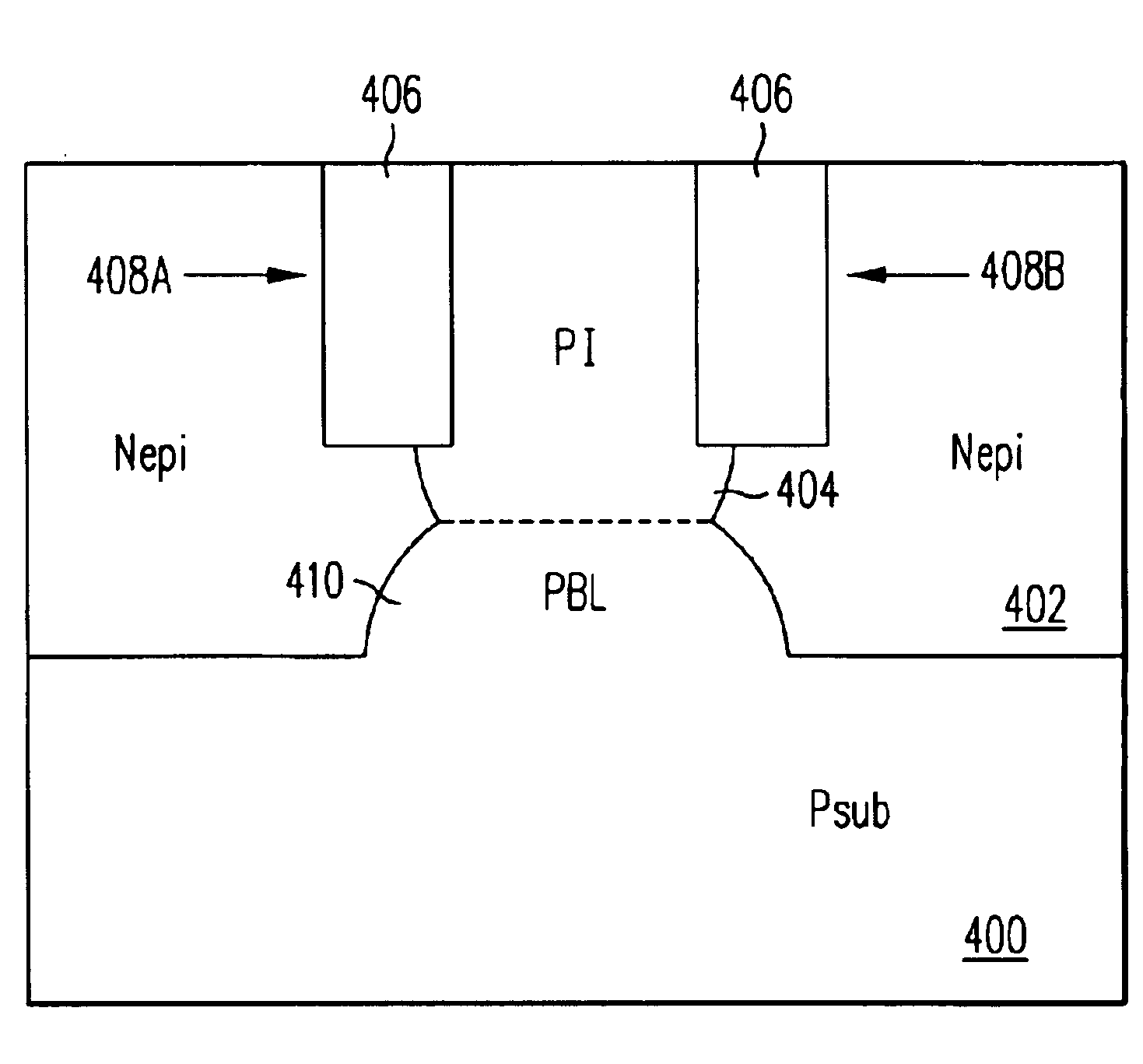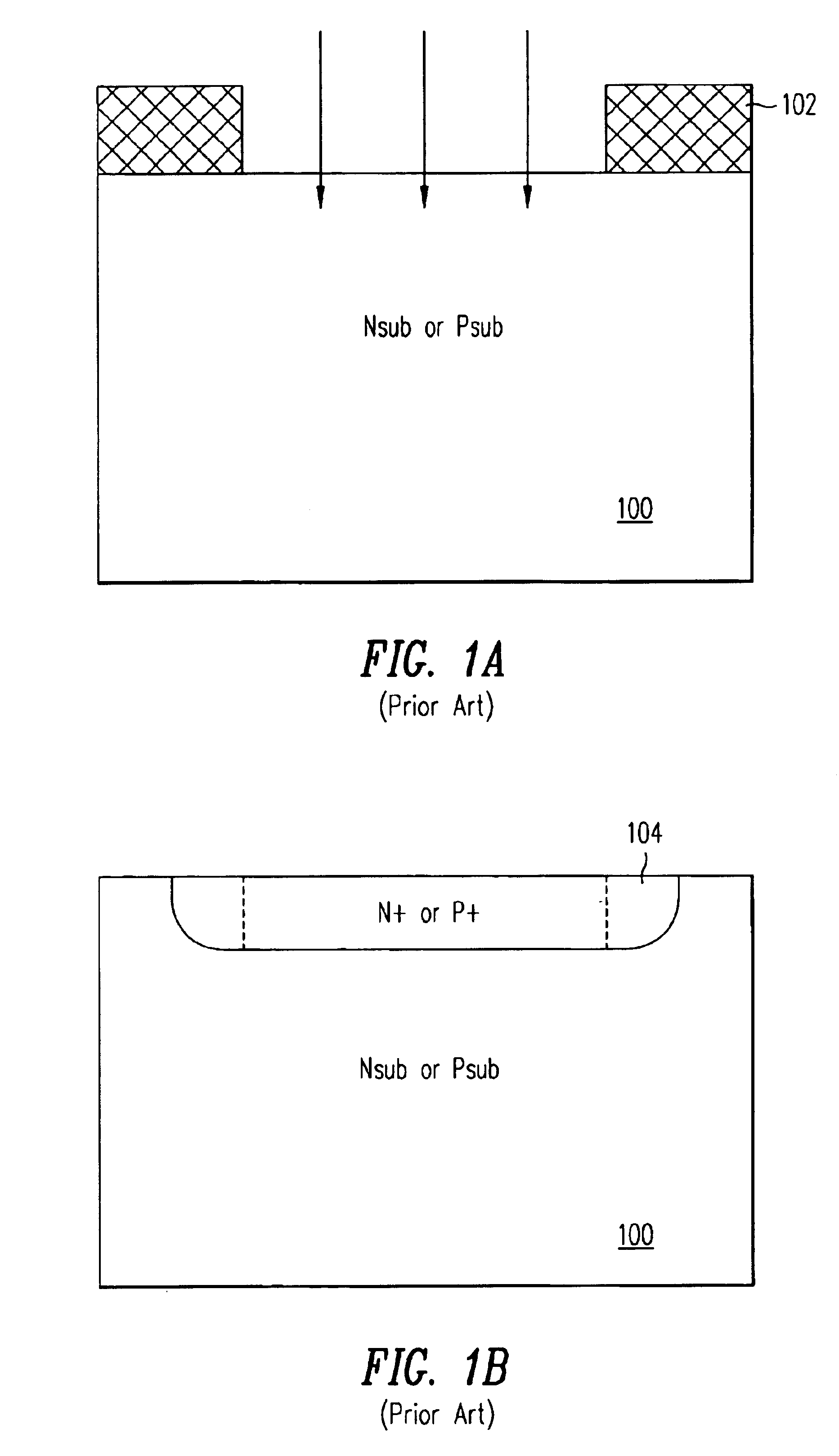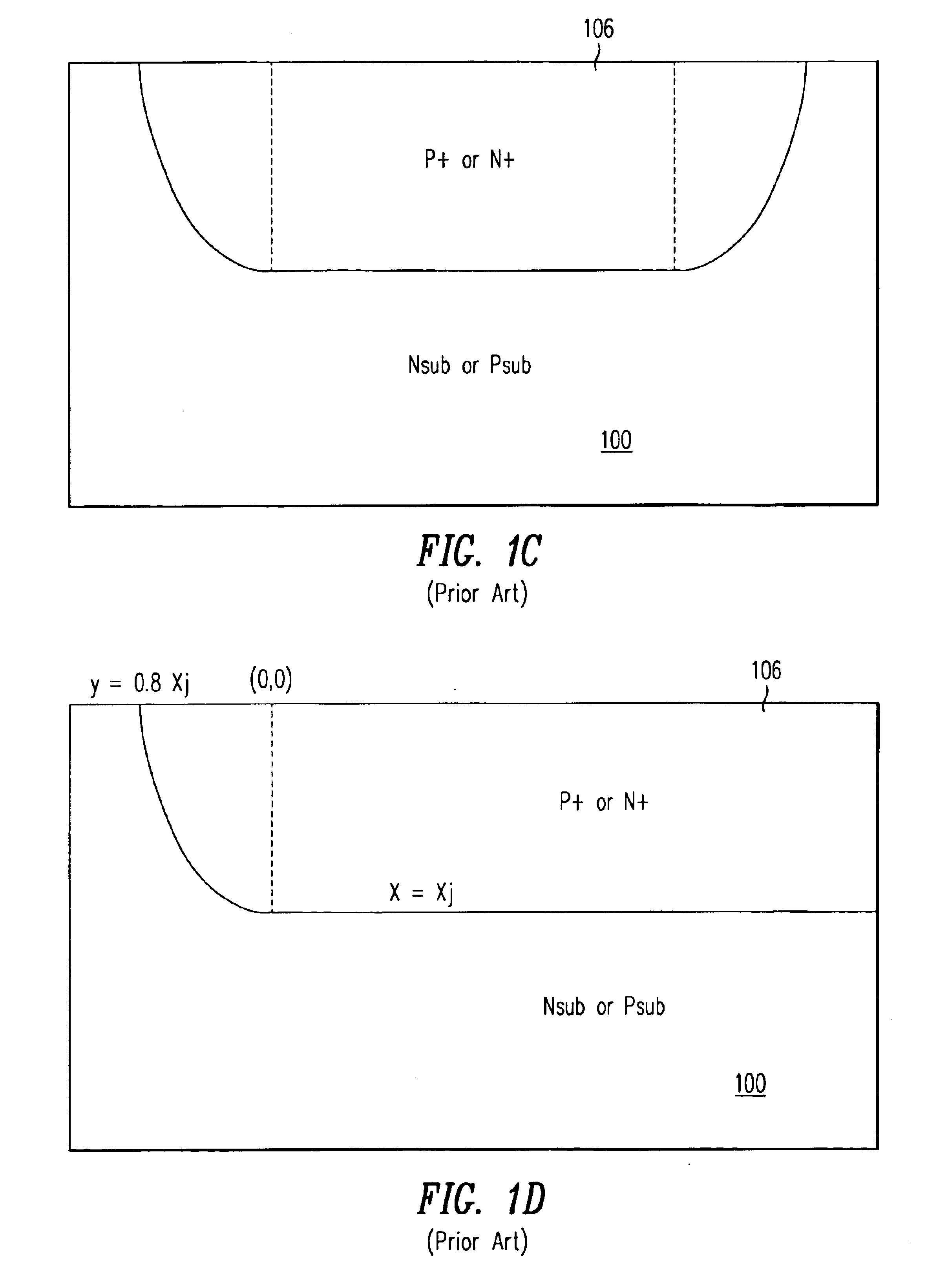Complementary analog bipolar transistors with trench-constrained isolation diffusion
- Summary
- Abstract
- Description
- Claims
- Application Information
AI Technical Summary
Benefits of technology
Problems solved by technology
Method used
Image
Examples
Embodiment Construction
[0078]FIG. 12 illustrates a basic example of the structure and process of this invention.
[0079]An N epi layer 402 has been grown on a P substrate 400, and a P-type dopant, such as boron, has been implanted through the top surface of N epi layer 402 to form a P isolation region 404. Trenches 408A and 408B have been formed in N epi layer 402 on opposite sides of P region 404. Trenches 408A and 408B are filled with a dielectric material 406, which may be an oxide, nitride or multiple layers of different types of dielectrics.
[0080]During a thermal process, as the P-type dopant in isolation region 404 diffuses downward, trenches 408A and 408B act as barriers to the lateral spreading of the dopant. The diffusivity of the dopant is generally lower in dielectric material 406 than in N epi layer 402. This limits the lateral spreading of the dopant. In turn, the resulting increased concentration of P-type dopant between trenches 408A and 408B tends to increase the gradient of the dopant conce...
PUM
 Login to View More
Login to View More Abstract
Description
Claims
Application Information
 Login to View More
Login to View More - R&D
- Intellectual Property
- Life Sciences
- Materials
- Tech Scout
- Unparalleled Data Quality
- Higher Quality Content
- 60% Fewer Hallucinations
Browse by: Latest US Patents, China's latest patents, Technical Efficacy Thesaurus, Application Domain, Technology Topic, Popular Technical Reports.
© 2025 PatSnap. All rights reserved.Legal|Privacy policy|Modern Slavery Act Transparency Statement|Sitemap|About US| Contact US: help@patsnap.com



